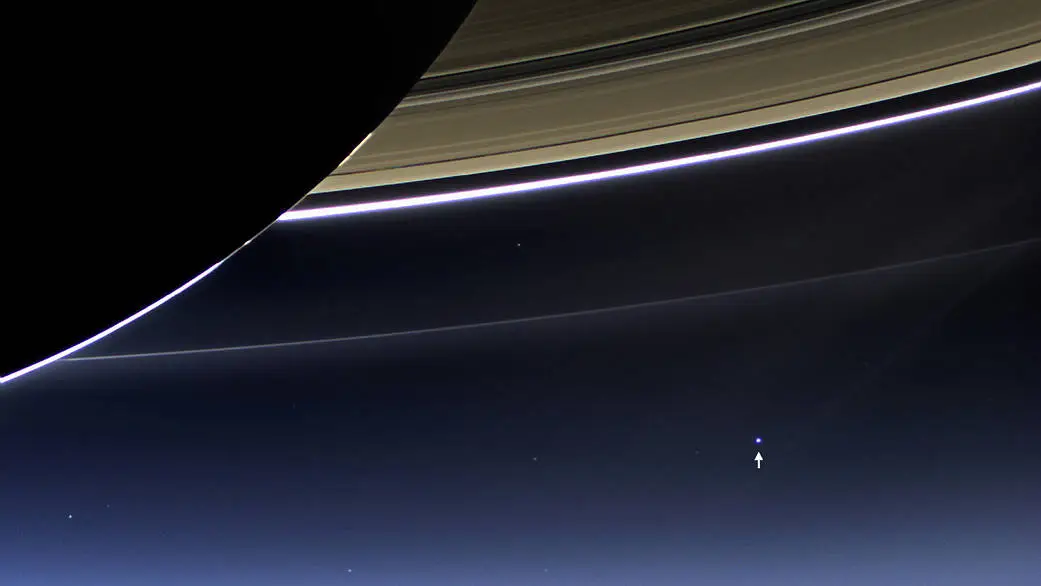On February 14, 1990, the Voyager 1 spacecraft took its last images. It photographed most of the planets in the Solar System – including our Earth. The image, called “Pale Blue Dot”, still holds the record as the most distant image of our home from space.
In honor of the 35th anniversary of the Pale Blue Dot, the editors of Universe Space Tech tell us how this iconic image was obtained and which spacecraft have still photographed our home.
The shoot of the century
The idea of using one of the Voyager vehicles to take pictures of the Earth belonged to Carl Sagan, a famous popularizer of science. He realized that such an image would not be of great scientific value. But at the same time, the scientist believed that it would have an important symbolic value and would help people realize the fragility of their homes.
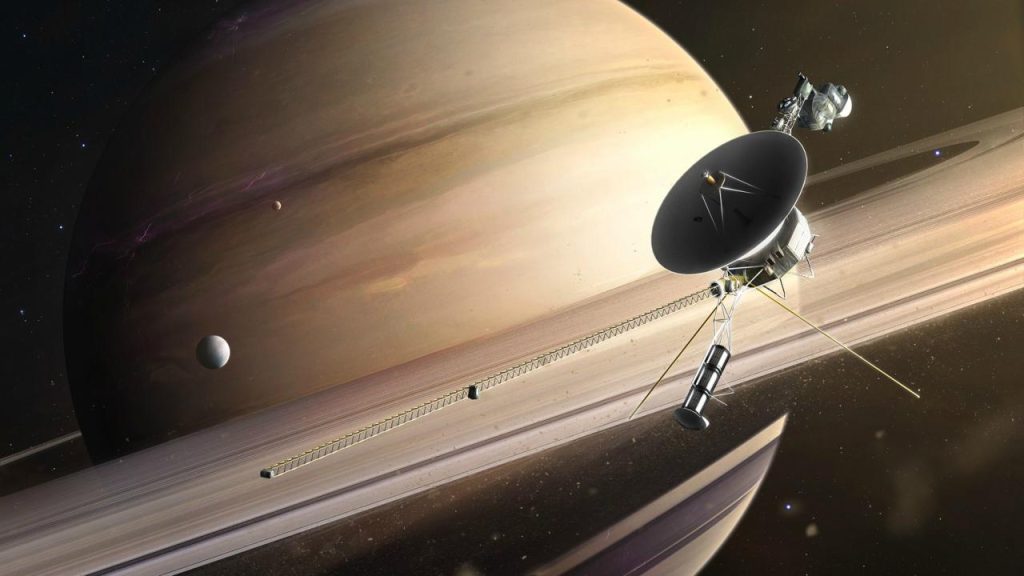
It took Sagan several years to convince NASA management to conduct such a survey. Voyager 1 was chosen as the performer. During the passage of Saturn in 1981, the planet’s gravity accelerated it to a speed exceeding the third space velocity (it became the fastest spacecraft leaving the Solar System) and directed “up” in relation to the plane of the ecliptic. This put Voyager 1 in the ideal position for such a survey.
Preparations for the photo shoot took several months. First, the engineers turned on the Voyager 1 cameras, which had not been used since 1981, and made sure they were operational. After that, the plan for the shoot itself was drawn up: it was planned to photograph not only the Earth but also all the other planets of the Solar System (scientists called it a “Family Portrait”).
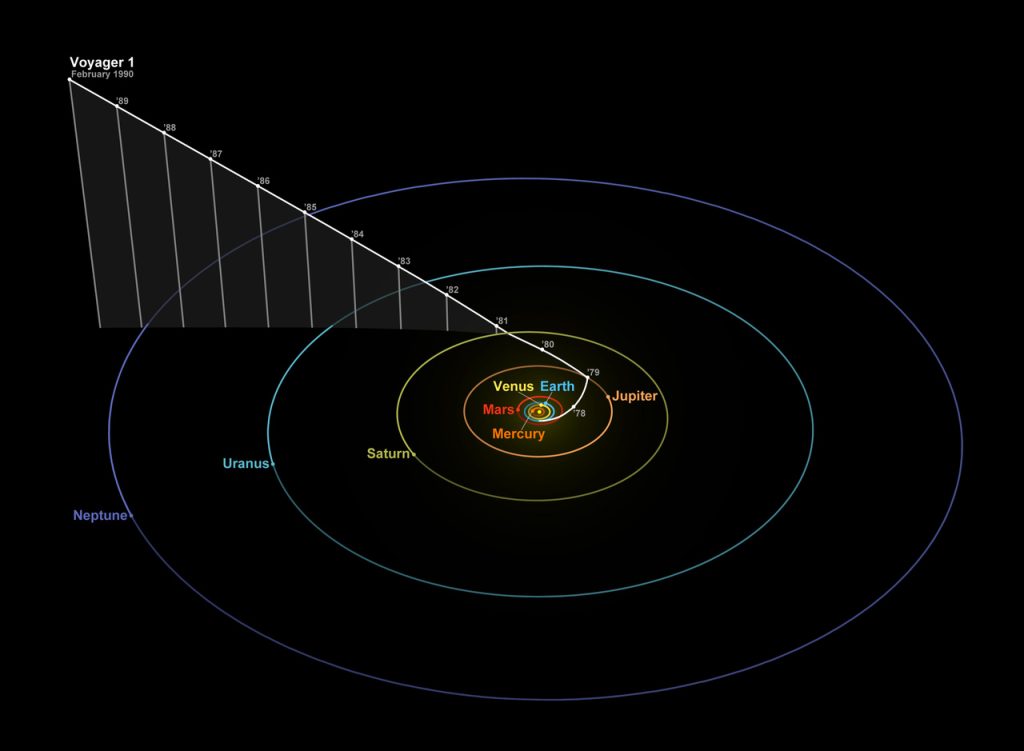
“The Shooting of the Century” took place between February 13 and 14, 1990. In total, Voyager 1 took 60 images. They were the last images in the history of the program. At the end of the program, the vehicle’s cameras were once again turned off. After their heaters were turned off in 1996 to save energy, it became physically impossible to repeat such a photo shoot.
Pale blue dot
Voyager 1 managed to photograph six of the eight planets in the Solar System. The Family Portrait did not include Mercury, which was too close to the Sun, or Mars, which was too dim to be visible. As for Pluto, which was still considered a planet at the time, it was abandoned at the planning stage because it was obvious that the Voyager 1 camera would not be able to photograph such a small object.
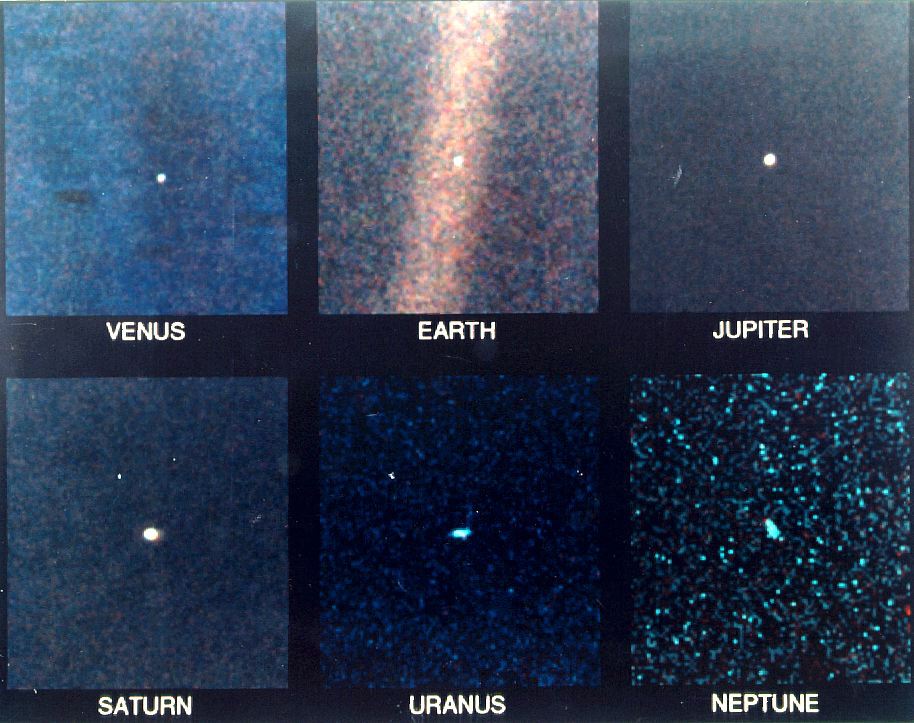
But first of all, everyone was interested in the image of the third planet from the Sun. Voyager 1 was up to the task. Our home appeared as a pale blue dot with a size of only 0.12 pixels. At the time of imaging, Voyager 1 was 6 billion kilometers from Earth – its radio signals took almost five and a half hours to reach the planet.
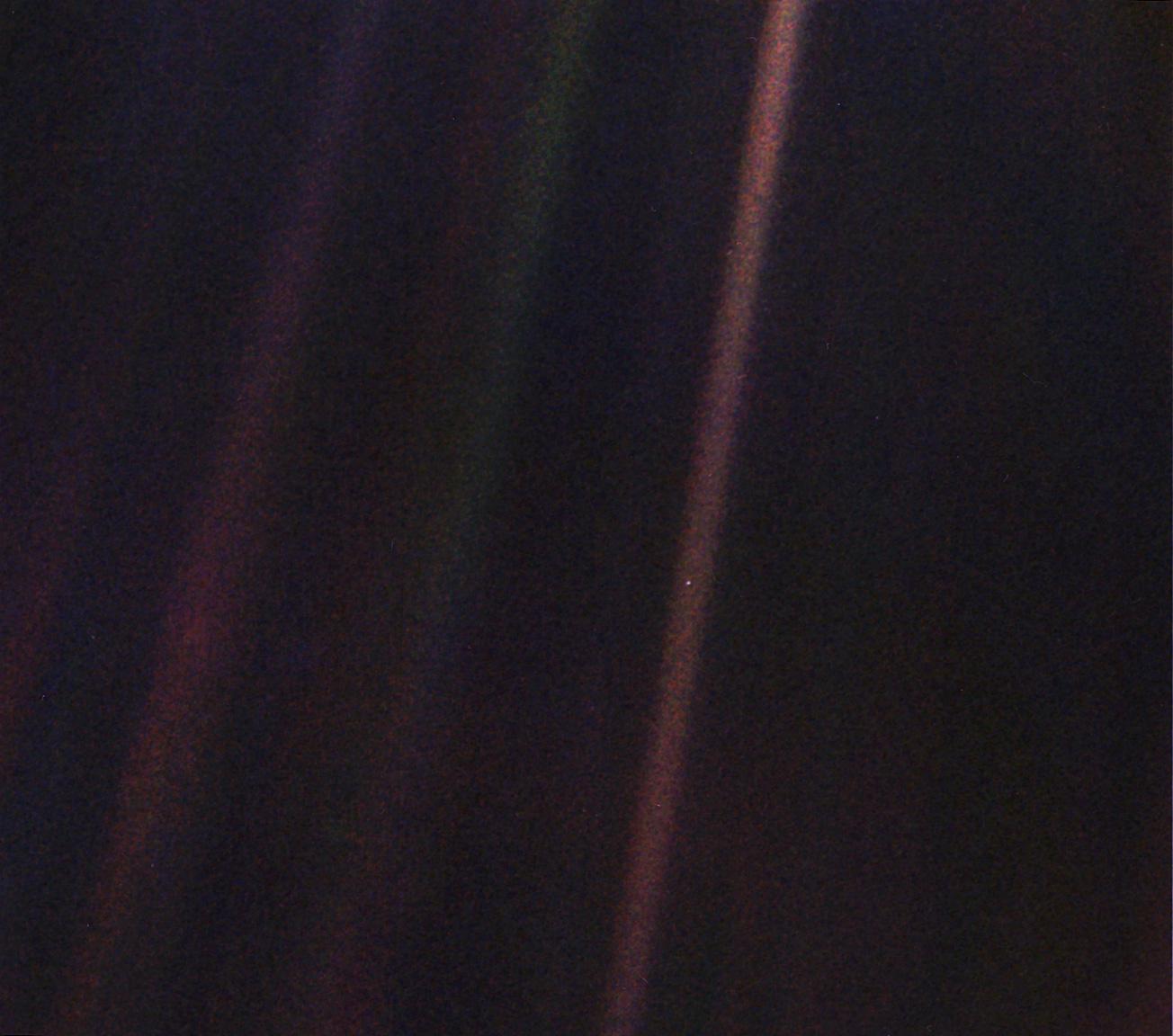
The Voyager 1 photograph became instantly iconic. It became on par with such famous space images of the 20th century as “Earthrise” and the photo of a footprint on the lunar surface. In 2020, on the occasion of the 30th anniversary of the “Pale Blue Dot”, NASA published an updated version of the image, created with the help of modern image processing tools.
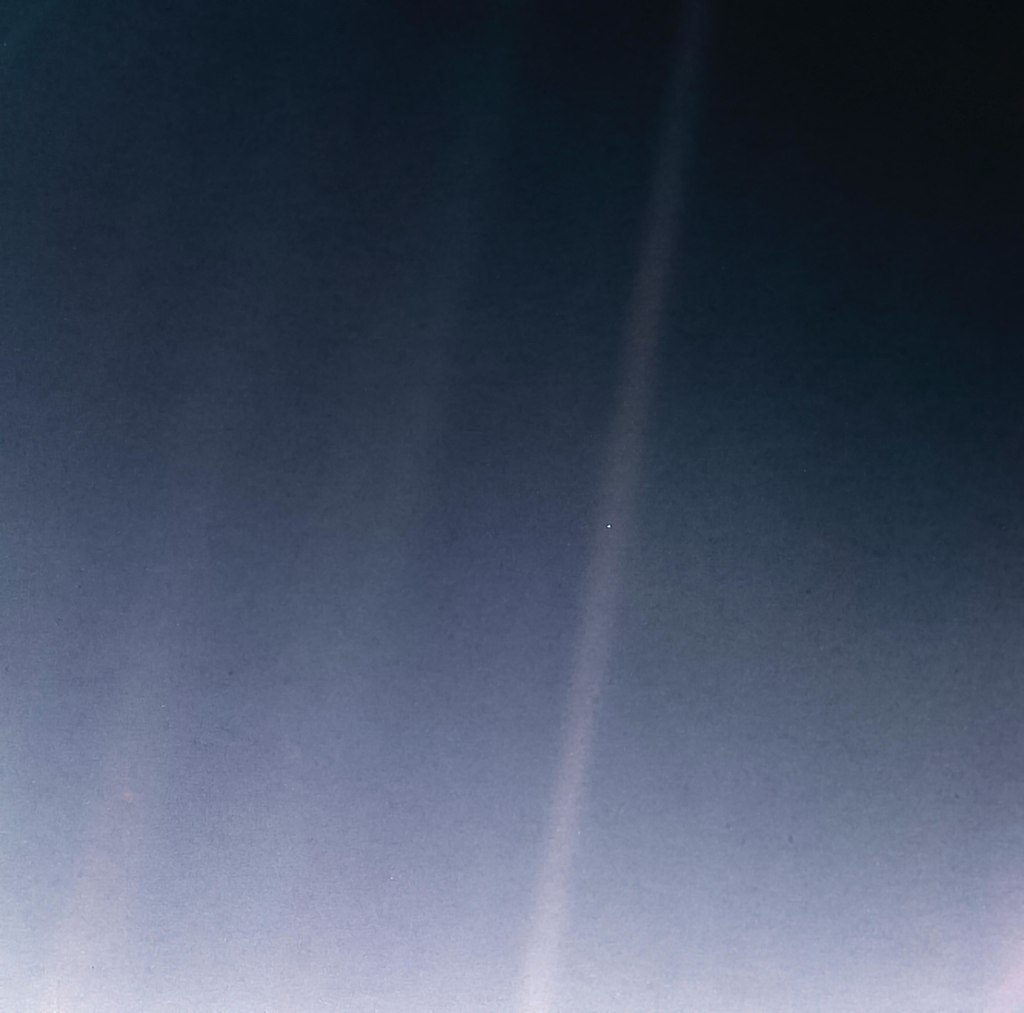
Source: NASA/JPL-Caltech
Carl Sagan, without whose efforts we would never have seen the Pale Blue Dot, named his book in its honor and commented on the photo as follows:
«From this distant vantage point, the Earth might not seem of any particular interest. But for us, it’s different. Consider again that dot. That’s here. That’s home. That’s us. On it everyone you love, everyone you know, everyone you ever heard of, every human being who ever was, lived out their lives. The aggregate of our joy and suffering, thousands of confident religions, ideologies, and economic doctrines, every hunter and forager, every hero and coward, every creator and destroyer of civilization, every king and peasant, every young couple in love, every mother and father, hopeful child, inventor and explorer, every teacher of morals, every corrupt politician, every “superstar,” every “supreme leader,” every saint and sinner in the history of our species lived there – on a mote of dust suspended in a sunbeam.
The Earth is a very small stage in a vast cosmic arena. Think of the rivers of blood spilled by all those generals and emperors so that, in glory and triumph, they could become the momentary masters of a fraction of a dot. Think of the endless cruelties visited by the inhabitants of one corner of this pixel on the scarcely distinguishable inhabitants of some other corner, how frequent their misunderstandings, how eager they are to kill one another, how fervent their hatreds.
Our posturings, our imagined self-importance, the delusion that we have some privileged position in the Universe, are challenged by this point of pale light. Our planet is a lonely speck in the great enveloping cosmic dark. In our obscurity, in all this vastness, there is no hint that help will come from elsewhere to save us from ourselves.
The Earth is the only world known so far to harbor life. There is nowhere else, at least in the near future, to which our species could migrate. Visit, yes. Settle, not yet. Like it or not, for the moment the Earth is where we make our stand».
Earth through the eyes of other spacecraft
After 35 years, the record of Voyager 1 is still unbroken. However, this does not mean that other spacecraft have no longer taken pictures of our planet from a great distance. For example, Mars rovers have repeatedly photographed the Earth in the sky of the Red Planet. This is how the Perseverance rover saw it in 2014.
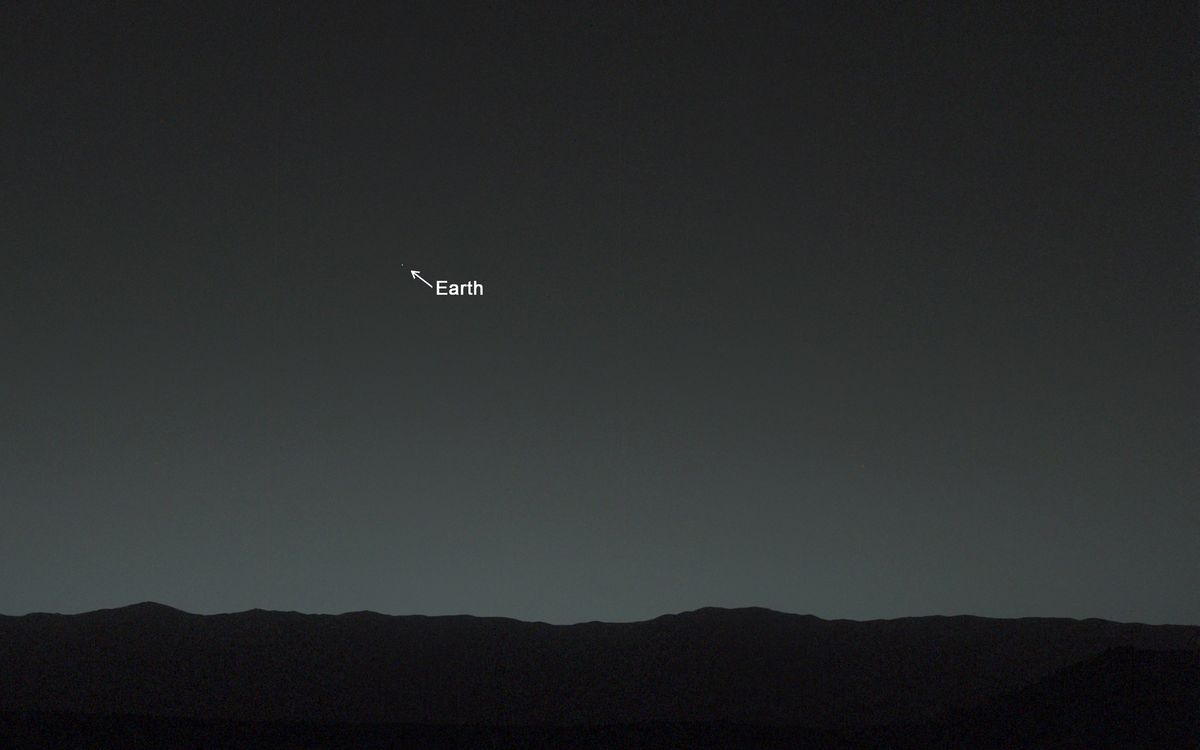
Our planet has also been photographed by vehicles studying the interior of the Solar System. One example is the following photograph of the Earth and the Moon. It was taken by the Mercury probe MESSENGER in 2010.

Source: NASA/Johns Hopkins University Applied Physics Laboratory/Carnegie Institution of Washington
But the most epic photo of Earth from deep space was obtained by the Cassini mission on July 13, 2013. On that day, the spacecraft took a portrait of Saturn at the moment of eclipse, when it covered the Sun.
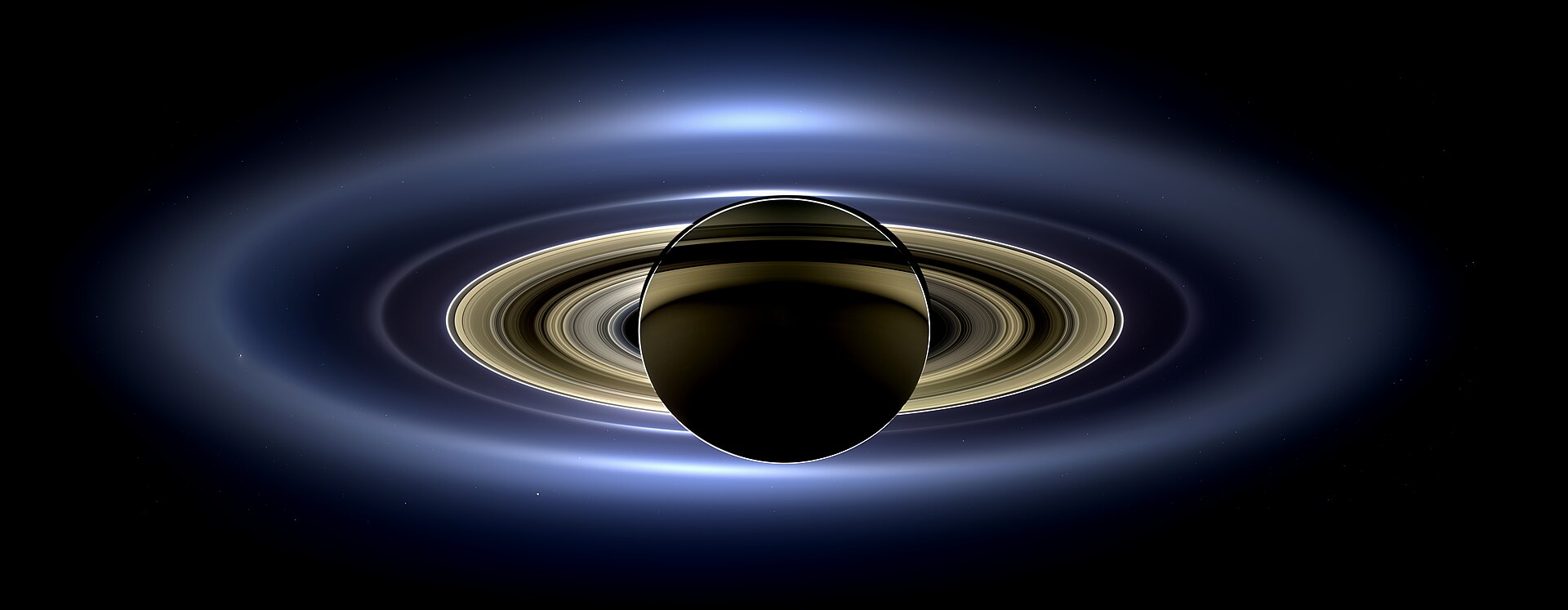
This way of shooting made it possible not only to capture in detail the structure of the famous rings of the gas giant but also to photograph again the familiar faint blue dot.
